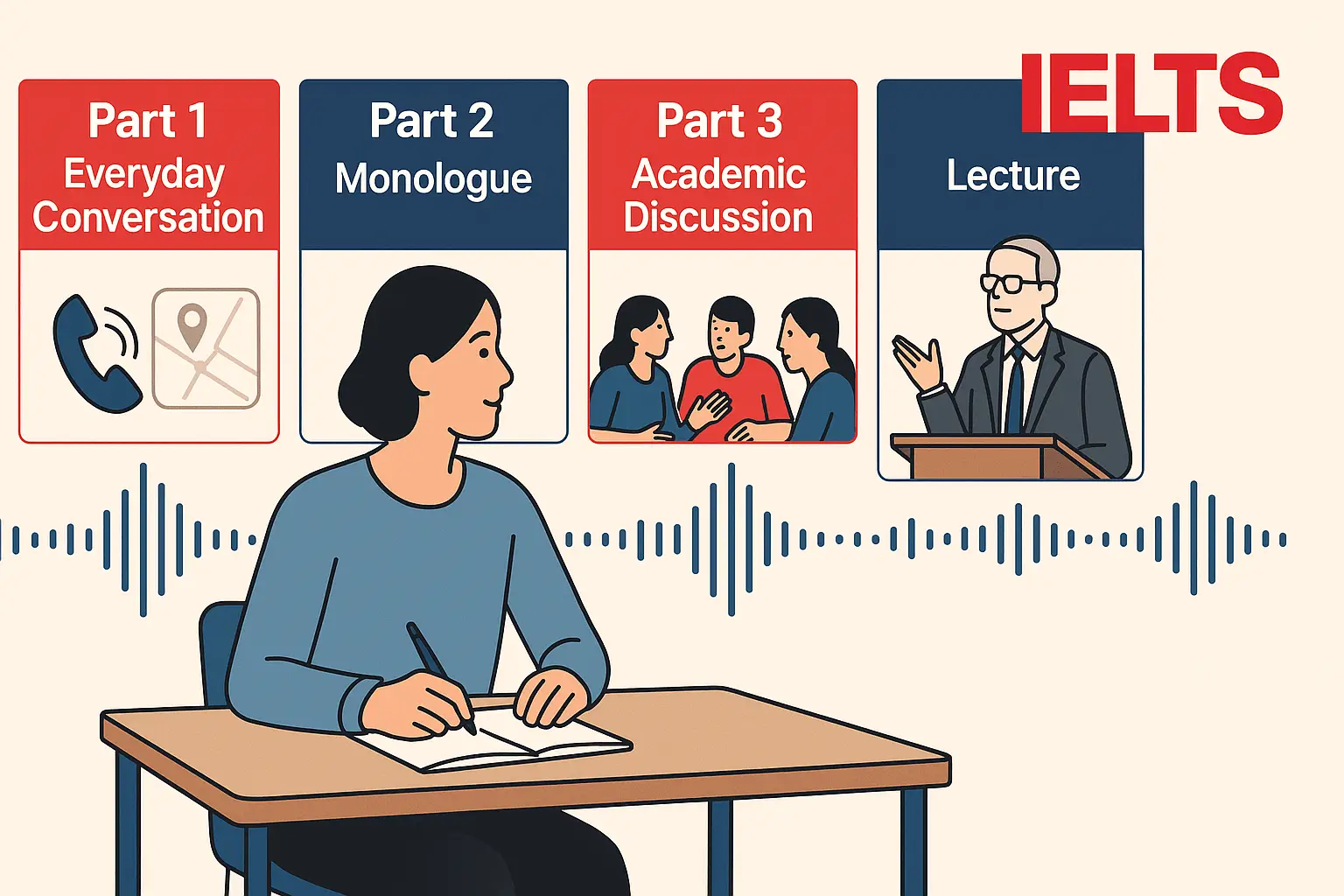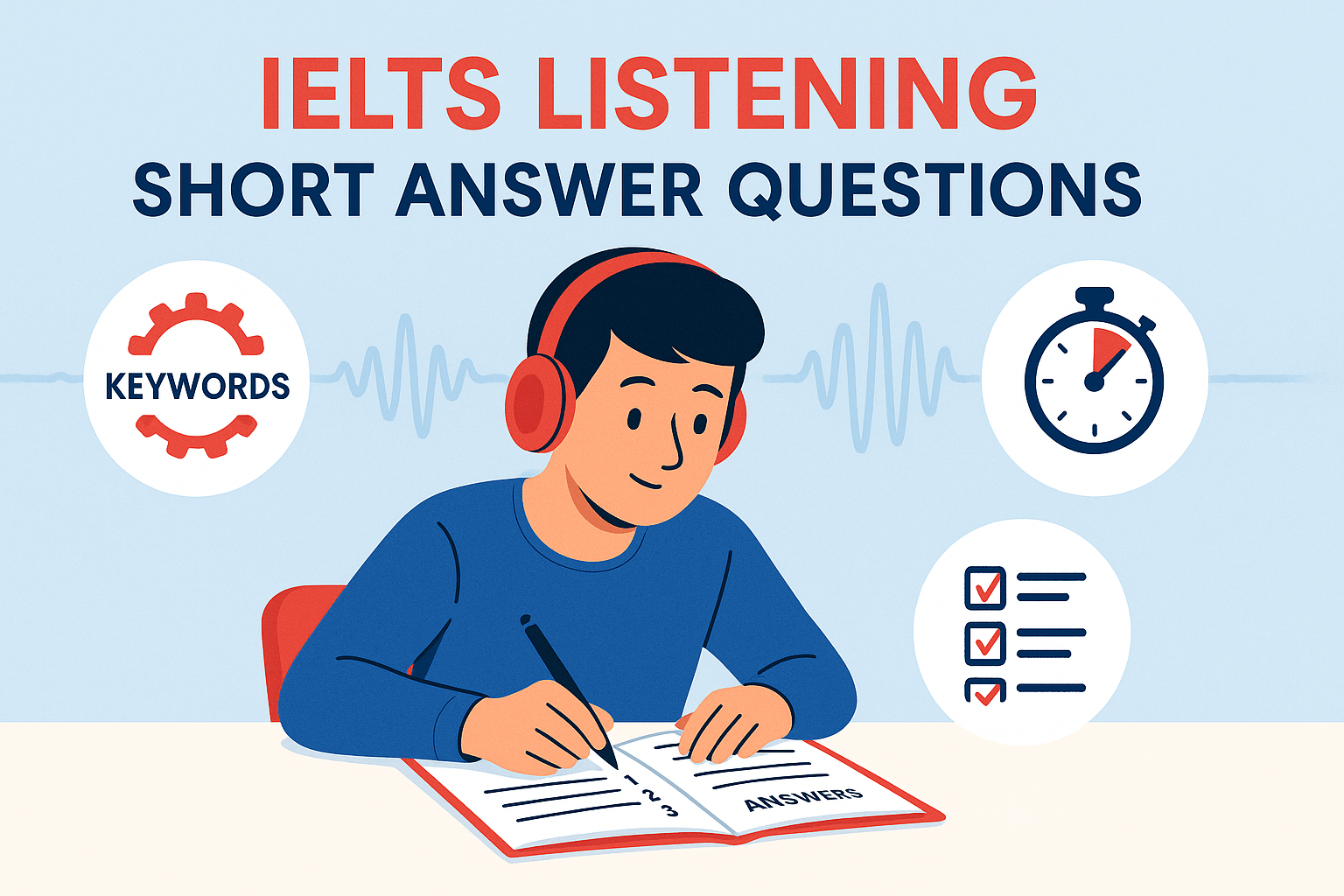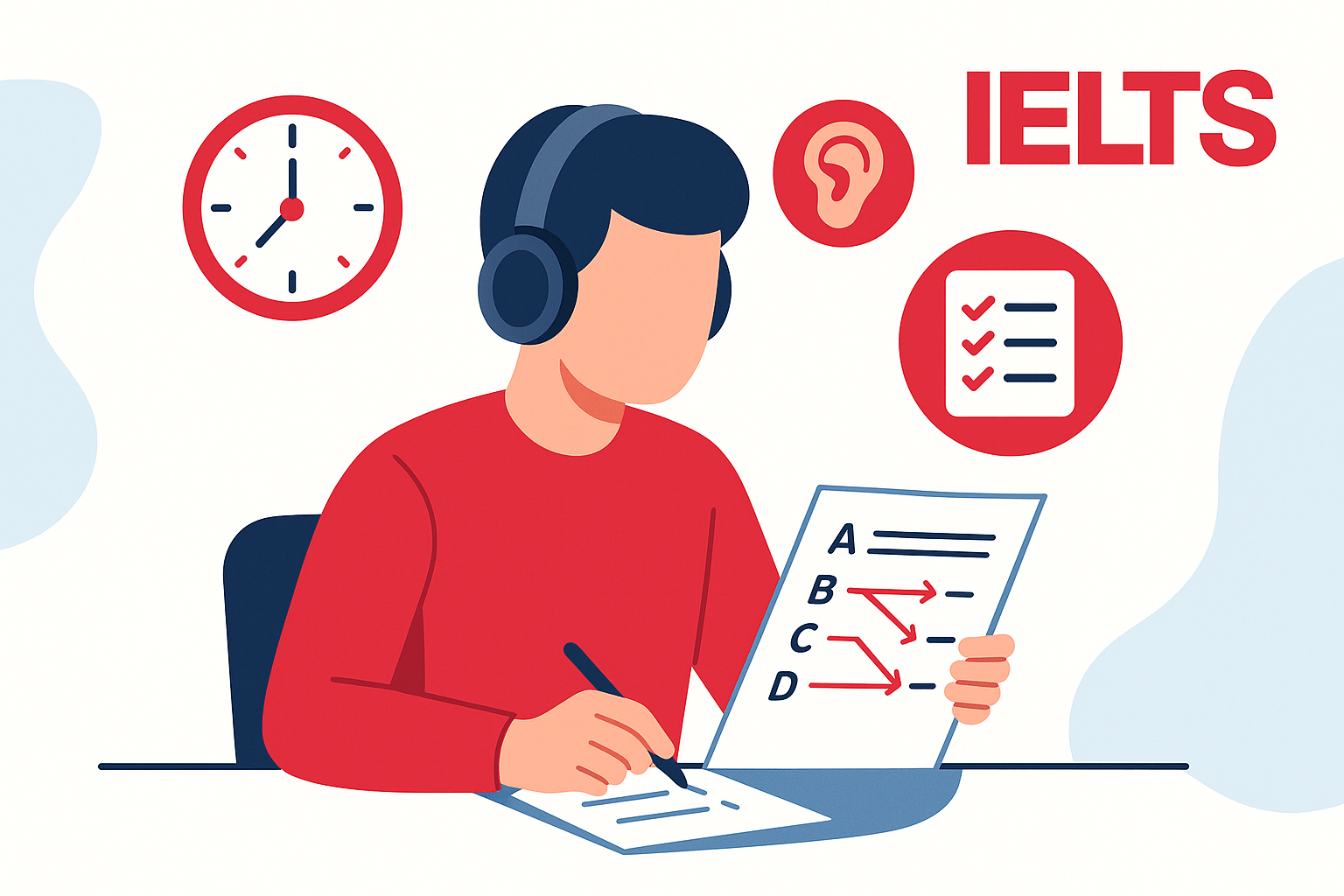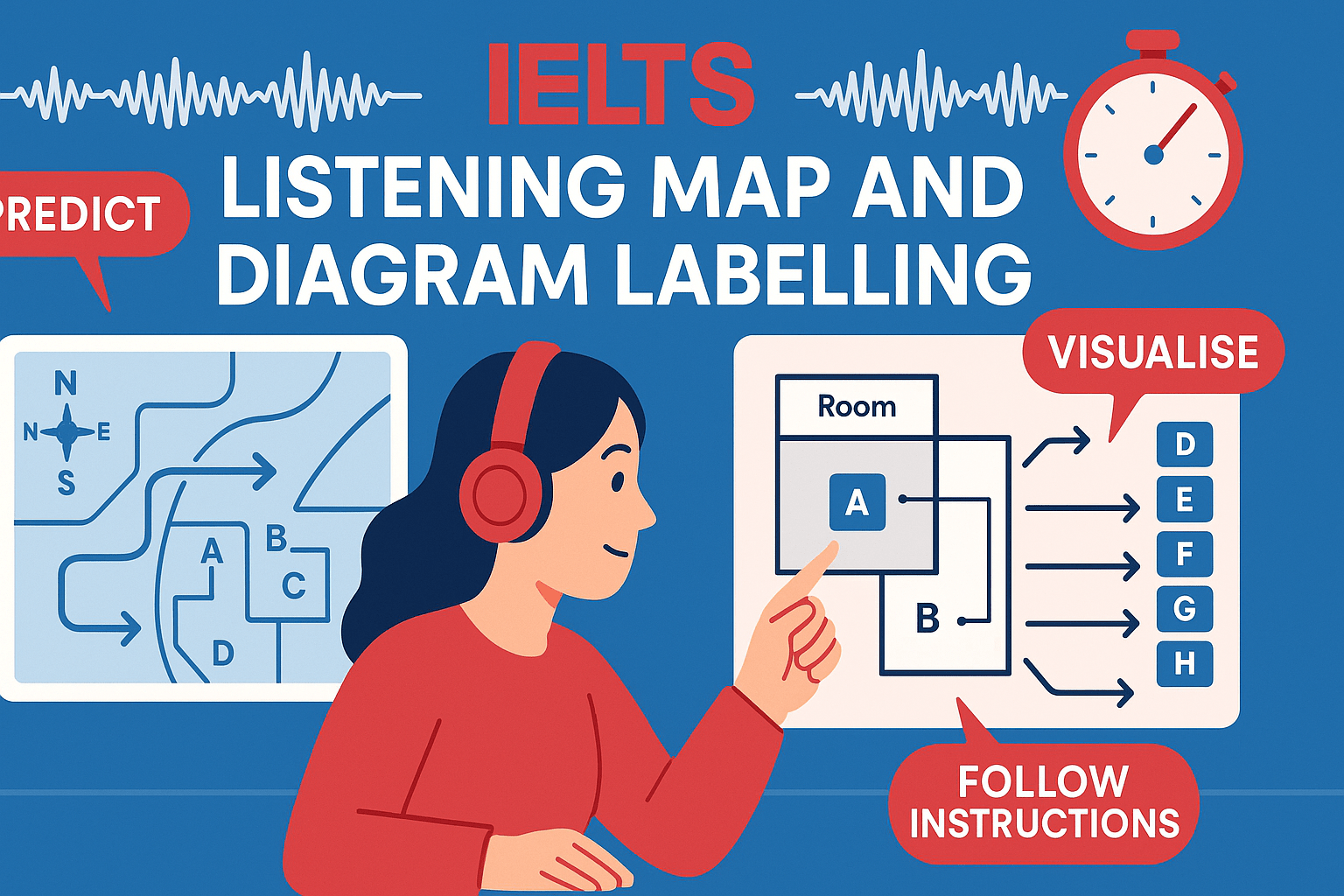As an international IELTS teacher who helps learners across the globe, I’m often asked, “What are the 4 parts of IELTS Listening, and how do they differ?” The truth is, understanding these four sections clearly can make a huge difference in your band score. In this guide, I’ll break down the 4 parts of IELTS Listening in detail, based on real student experiences and strategies that have worked time and again.
Whether you’re aiming for Band 7 or pushing towards a Band 9, knowing what to expect in each part — and how to approach it — is your first step to success.
Why You Must Understand the 4 Listening Sections
One of my students, Haruto from Japan, consistently scored Band 6.5 in Listening. After reviewing his practice tests, we realised he was treating all sections the same — not adjusting his strategy per section. Once he understood the 4 parts of IELTS Listening and tailored his approach to each, he jumped to Band 8. That’s the power of knowing what to expect.
Let’s walk through each part so you can do the same.
Part 1: Everyday Social Conversation
What It Is:
This section presents a conversation between two people in a daily-life context — such as booking a hotel, enquiring about a service, or arranging travel.
What to Expect:
✔ A two-person dialogue
✔ Topics like schedules, costs, and basic information
✔ Form, note, or table completion
Student Challenge:
Students often lose marks here because they underestimate the simplicity and let their guard down.
Teacher Tip:
Focus on spelling, especially for names, addresses, and numbers. This is where many students lose “easy” marks.
👉 For more test format insights, see IELTS Listening Test Format Overview.
Part 2: Short Monologue in a Social Context
What It Is:
You’ll hear a single speaker giving information — often about facilities, events, or procedures.
What to Expect:
✔ One person speaking clearly
✔ Descriptions of places, tours, or processes
✔ Often includes map labelling or multiple-choice
Student Challenge:
Many students panic when facing maps. My student Layla from Egypt struggled with this until she learned how to “predict” content from the title and headings.
Teacher Tip:
Practice identifying directions (e.g., “next to”, “opposite”) and keywords on maps. Practice listening tests can help a lot here.
Part 3: Academic Discussion
What It Is:
This part includes a discussion between two to four people, often students and a tutor discussing coursework.
What to Expect:
✔ More than two speakers
✔ Complex vocabulary and ideas
✔ Matching or multiple-choice questions
Student Challenge:
Speaker-switching confuses learners. Yuki from South Korea kept losing track of who was talking until she started marking speaker changes during practice.
Teacher Tip:
Train your ear to follow tone changes and use initials (S1, S2, T) to track speakers in your notes.
For full strategies, explore IELTS Listening for Band 7–9: Complete Guide.
Part 4: University-Style Lecture
What It Is:
A single speaker delivers a formal, academic lecture, typically related to a university subject.
What to Expect:
✔ Dense academic language
✔ No pause in the audio
✔ Note completion or sentence completion questions
Student Challenge:
This is the section where most students lose their highest-band potential. The fast pace and lack of repetition demand strong focus.
Teacher Tip:
Skim the questions before the audio starts and predict the kind of information you’ll hear. You must listen actively — not passively.
Common Mistakes Across All 4 Parts (And How to Avoid Them)
Many students repeat the same errors in each section, such as:
- Not reading instructions carefully
- Missing transitions between questions
- Writing too many words (e.g., when it says “NO MORE THAN TWO WORDS”)
That’s why I always recommend official sources like ielts.org and IDP IELTS to understand marking rules, or British Council IELTS for updated test samples. You can also explore IELTS premium preparation courses for structured guidance.
Final Thoughts
Understanding the 4 parts of IELTS Listening isn’t just about memorising structure — it’s about preparing your ears and mind for different situations. Each section tests different listening skills, from understanding everyday vocabulary to decoding academic speech.
Remember: the IELTS Listening test is predictable, and that’s your advantage — if you prepare with awareness.
Frequently Asked Questions (FAQ)
✅ How long is the IELTS Listening test?
The test lasts about 30 minutes, with 10 additional minutes to transfer answers if you’re taking the paper-based version.
✅ Are the 4 parts always in the same order?
Yes, they follow this structure:
Part 1 – Everyday conversation
Part 2 – Monologue in a social setting
Part 3 – Academic group discussion
Part 4 – Academic lecture
✅ Do all four parts get harder?
Yes, the difficulty generally increases progressively from Part 1 to Part 4.
✅ What accents are used in IELTS Listening?
You may hear British, Australian, New Zealand, or Canadian accents, as IELTS is an international test.
✅ Can I write in capital letters?
Yes, capital letters are accepted in the Listening test. Many students prefer writing all answers in capitals to avoid handwriting issues.
If you found this guide helpful, be sure to check out my full breakdown on IELTS Listening for Band 7–9 and try out our free Listening practice tests to put your learning into action.
You’ve got this — now go listen with purpose.




